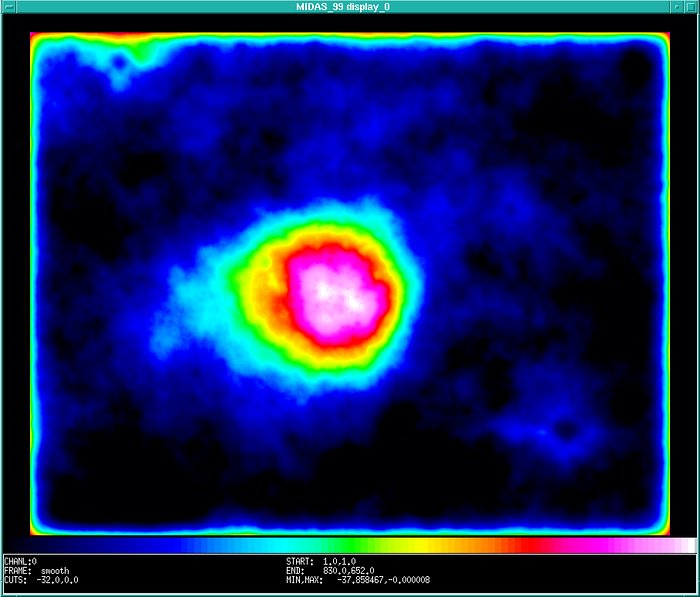Comet Hale-Bopp
This image was produced through successive use of photographic enhancement and subtraction, followed by smoothing by computer processing . When a matching, earlier exposure of the same sky field with the same telescope (on which the comet is not present) is photographically subtracted from the enhanced photo of the same field in which the comet is present, then the images of the stars should in principle cancel out, leaving only that of the comet in the field. A full cancellation is virtually impossible to achieve in practice, but if the resulting image is heavily smoothed (i.e. substituting each image element with the mean intensity of its surroundings), then the smaller images of the stars disappear and the full extent of the comet's large coma becomes visible. This false-colour photo was produced in this way by means of computer processing within the MIDAS image processing system. The images of the brightest stars could not be completely removed by this process and faint remnants are still present. (In technical terms, a 2-D low-pass Fourier filter was used to achieve heavy smoothing over approx. 16 x 16 arcsec cells).
Crédito:ESO
Sobre la imagen
| Identificador: | eso9521c |
| Tipo: | Observación |
| Fecha de publicación: | 30 de Agosto de 1995 |
| Noticias relacionadas: | eso9521 |
| Tamaño: | 908 x 774 px |
Sobre el objeto
| Nombre: | Comet Hale-Bopp |
| Tipo: | Solar System : Interplanetary Body : Comet |
| Categoría: | Solar System |
Fondo de pantalla
Colores y filtros
| Banda | Longitud de onda | Telescopio |
|---|---|---|
| Óptico R | 665 nm | ESO 1-metre Schmidt telescope |
